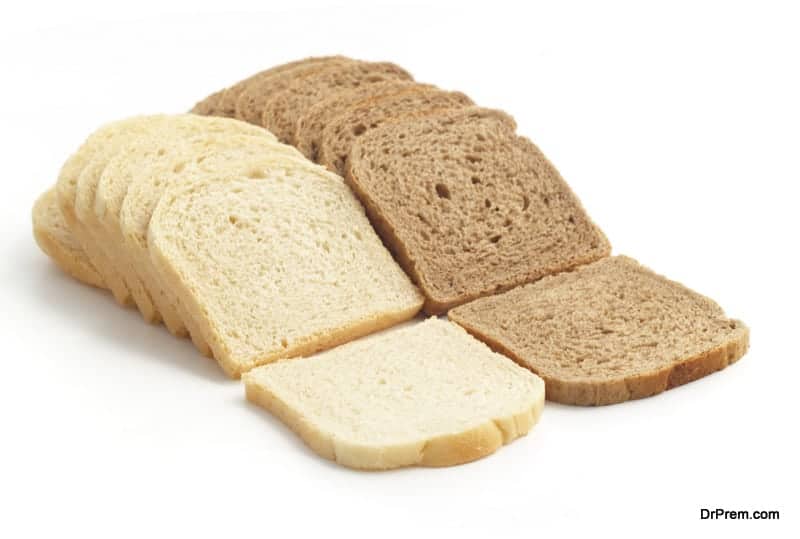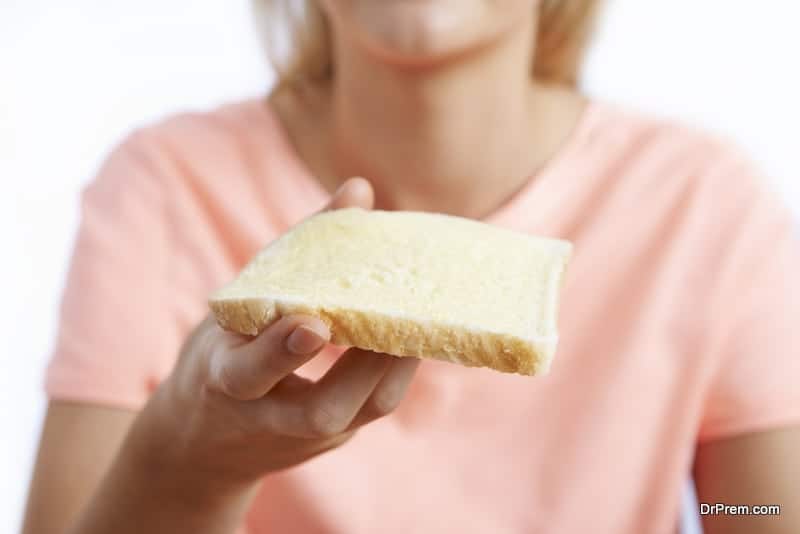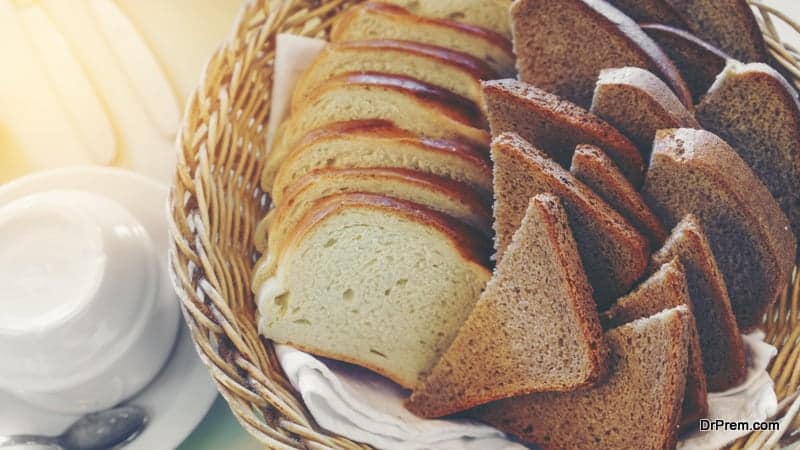Bread is a food of flavored nutrients and it always continues to be the basis of our daily diet. Today, with increasing health consciousness, most of the people are giving priority to their health and hygiene habits. Brown bread and white bread have their own pros and cons.
While brown bread refers to bread made with the significant use of whole grain flour which includes wheat and dark colored ingredients known as molasses or coffee; white bread mostly refers to bread produced from wheat flour in which the bran and germ layers are removed during processing.
The major difference between both of them is that the white bread constitutes of endosperm part of the grain, and brown bread constitutes of endosperm, the bran,and the germ. It is very important to choose the right type of bread. Hence, this article.
Difference Between Brown Bread and White Bread
Vitamin related factors:
Brown bread is considered to be high in vitamins, minerals, and proteins because it contains the whole grain. White bread, as it is made from the endospermic part, is rich in proteins as well as carbohydrates.
Nutritional factors:
When you are on a diet for weight loss, you have the least opportunity to have the vitamins and proteins that are required for optimal health. That’s why it is of extreme importance to pick up the bread with high nutrient density. Brown bread is likely to be more nutritious compared to white bread.
While visiting a market, it becomes too complicated to choose one bread for thehealthy breakfast options. As we all know the contents of white bread includes maida or refined flour, it is devoid of nutritional benefits and contains negligible fiber which further does not give anything to our body.
Comparison:
White bread is quite easy to be identified as it is obviously white in color, but it is not the same in case of brown bread. Sometimes marketers use different marketing tactics by adding caramel to white bread to ensure that it looks brown bread to increase the product’s revenue.
There are some ways to identify the right kind of brown bread and white bread.One major difference between white bread and brown bread is that white bread is lighter than brown bread due to bleaching. Both types of bread vary in their texture and weight as well.
Production:
The production of white bread is time-consuming and includes a lot of things. Firstly, it is bleached with a number of chemicals such as benzyl peroxide and potassium bromide. In addition to that, it is fortified with minerals through an artificial process. Brown bread, on the other hand, contains all natural elements.
Biochemistry of the two:
Despite the popularity of white bread, even a slice of white bread is considered to be unhealthy to put into our body. After bleaching it while processing, the lifeless refined starch is treated with chemicals such as azodicarbonamide, ammonium chloride,andpolyethylene monostearate.
When a large amount of refined carbohydrates such as white bread is consumed, it increases the level of insulin, further shuttling away the rapidly absorbed sugars that you have just eaten. It is taken out of the bloodstream where it is dangerous for our body.
From there it is converted to glycogen and then into triglycerides for storage in your body fats. It ends with optimal conditions for weight gain. Weight gain also happens as manufacturers add some synthetically produced vitamins and minerals which a human body cannot digest properly. On top of it, it is claimed to be enriched.
Eating whole bread i.e. brown bread, on the other hand, is a sound weight loss strategy – so we can define it as a healthy breakfast option. When you are watching on your weight, brown bread i.e. whole wheat bread is a smart choice. In a particular study conducted, people dependant on a lower calorie diet including whole grains lost more belly fat than the ones who consumed refined grains and bread.
Choosing the right type of bread:

- While picking up a packet of bread, it should be taken into consideration that it lists whole bread as the primary ingredient mainly consisting of whole wheat, whole oats, or white whole wheat.
- “Multi-grain” or “wheat bread” do not necessarily mean to be a whole grain product.
- Always check the ingredient label.
- Check whole grain bread products with at least 3 grams of fiber per saving.
Brown bread and white breadeaten in balanced quantities not only contribute to addressing obesity, but also provide our body with plenty of nutrients which are essential for good functioning. Bread was once thought to be a bad word in diets and not recommended for good health. But now it has become a must in our diet.
Now, a question arises: Which bread would be healthier for our body? Which bread between brown bread and white bread must be chosen as the right type of bread? Most of the nutritionists suggest that one of the most recommended healthy breakfast options would be brown bread. While choosing bread for your weight loss diet, it is advisable to pick brown bread over white whenever possible.
Conclusion:
The concluding reasonforchoosing the right type of breadis that both breads have different calorie content. Also, white bread has less fiber compared to brown bread. It also contains more proteins contributing to whole grain bread satiating qualities. In a human body, the fiber calories are partially absorbed, further making fiber a marvelous addition to any weight loss diet plan.
Many studies have also proved so. One being ‘the American Journal of Clinical Nutrition’. In 2010, the journal reported that participants consuming three portions of brown bread experienced a significantly greater reduction in their blood pressure after 12 weeks than the ones who did not intake whole bread. So, the bottom line is: Go for brown bread.









